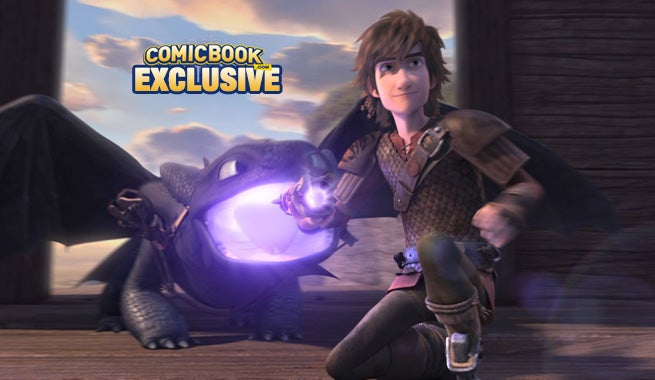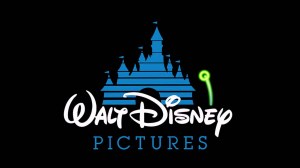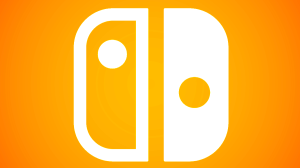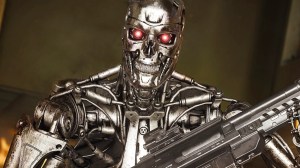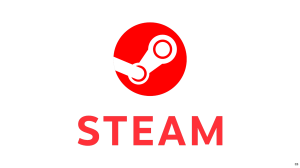The visual effects teams behind movies are all too often the unsung heroes when they do their job well. However, in an animated project, such as Dragons: Race to the Edge, the effects team receive their accolades for a job well done.
Videos by ComicBook.com
We had the chance to catch up with David Jones (X-Men Origins: Wolverine, Black Hawk Down), the visual effects supervisor behind Dragons: Race to the Edge to find out more about what the life of a graphic designer entails and learn a little bit about computer graphics in both animated features and live-action.
—–
You worked on X-Men Origins: Wolverine. Deadpool is going to revisit some of that universe. Have you seen the trailer yet?
Yes. Oh my goodness. I have to say, when I initially saw the leaked footage which seemed to have a CG tarnish to it, a little bit of a PS4 cut scene to it, I thought, “I don’t know if I can get behind this character because he looks so computer generated.” But – getting the context and the humor and I think they’ve done a lot more work for the expressions of the eyes and stuff, I’m behind it now. And the fact that they retconned Green Lantern so severely right from the beginning, they obviously have a firm understanding of the YouTube comment section.
Yeah. They’re definitely in tune with the audience.
Yeah and talking of my past experience with super hero movies, I always find it amusing… There’s a great RocketJump piece on why all super hero CGI isn’t ruining movies but bad CGI is, and I think someone else did something like that and I read them both about a month ago. In both cases, they used shots from the Origins: Wolverine movie as examples of bad CGI.
Oh, no!
Well, you know, given the time… Considering the budget and the time scale, we knew we probably weren’t doing justice to his claws or him getting blown off a Jeep and thrown into a helicopter. Sometimes we’d get caught up in the spirit of the thing and in retrospect, it’s probably not my proudest.
Do you think X-Men Origins: Wolverine could’ve been saved a bit with some improved graphics?
You know, I would have to go with Freddy Wong from RocketJump in saying that visual effects are neither the death nor saving grace of a movie. They’re just sort of an amplifier and if the story is not working, bad visual effects make it worse. It’s the same reason we still get so much pleasure from Star Wars in places it’s so obviously miniatures. You’re so into the spirit of the story that you’ll enjoy absolutely anything and you’ll watch it over and over again and visual effects is just a magnifying glass for story. If you’re story is working then visual effects enhances if they’re both seamless. If the story isn’t working then the viewer’s attention turns to the the flaws in the visual effects and they’ll drag you down like a millstone in the bottom of the ocean on YouTube comments.
That’s the truth of it. The internet is a ruthless place!
Yeah. The internet is sort of… I don’t know if it’s polishing stones to become tiny gems or it’s just such a brutal shredder of all things creative that it’s just occasionally you have something that is so unquestionably good that can survive.
Those are tough to find. It’s hard to please everybody. One thing you worked on which I’m a huge fan of was Bad Boys II. That had great visual effects but it all seemed so practical. What was your role there?
There are shots… For instance, the Ferrari on the bridge. It skid to a stop. It’s actually a trailer shot I think. It opens the door and they get out and start shooting but they get out and do sort of a 180 skid. That car was actually on a dragged wooden platform and the wheels have to animated and the platform removed so there’s a lot of kind of augmentation of practical effects there. In a lot of the chase scenes, Michael Bay is very generous with secondary cameras, so we put secondary cameras, you know, in one car crash we’d have 18 cameras. So cameras are always visible to the other cameras. There’s tons of removal work to do and it’s complicated. Like the Hummer going down through the Mexican slums, that was covered in camera mounts. We could only do that twice based on what we had available so we did all of those first person shorts in that sequence – the Hummer was completely covered in cameras which had to be removed. It was a very practical show with a lot of digital clean up to make it look good.
The mansion he blew up was a mansion he blew up but there was definitely things that had to be done to sell it. You can’t actually have people standing right there. That’s, in some ways, the fun form of visual effects. Black Hawk Down had a lot of that, too. Big practical exciting things and then removing the safety issues where you can’t have people too close or wires controlling stunt men… Removing that is seamless visual effects when you do it right and very satisfying. That’s one of the points Freddy Wong made, is that when visual effects are done really well, it’s invisible and you don’t notice. There’s no accolade to the artist. When we fail at our jobs we become noticed. That’s one of the pleasing differences between animation, like Dragons, and visual effects since it’s obvious right from the first frame it’s generated from the computer shamelessly. That’s when we receive our accolades or accusations equally.
Bad Boys III and IV both announced, I’m very excited about that, but speaking of Dragons: Race to the Edge, I have a question about animation. Do the voices or the animation come first?
That’s a great question and I think I answer not only for this show but for almost everything of this type – we record the voices first. One of the things in this cartoon style entertainment is the actors’ performances sell the whole thing. TJ Miller in our show is a great example, too. It’s not only his delivery but he’s great for improv. He’ll start riffing on lines that make it considerably funnier than it would’ve been. One of the steps in the process is, while we’re doing the animatic storyboarding process, which is, you know, taking shots and expressions and stuff, we’re also simultaneously trying to record all the voice actors or as many as we can get.
Now that we have very talented scratch voice actors who are very talented but will fill in for some of our cast voice actors if their not available, so that we can get a bulk animatic, which is a timed out version of the storyboards all cut together, we have a fairly honest representation of the show in terms of the acting because you really can’t move into animation without knowing exactly what the performance of the voice actor was going for. There are so many ways to interpret lines and to actually interpret the mood of scene so you need whatever your Jay Baruchel or America Ferrara is gonna bring to it before you can start animating. They define the characters and, you know, I don’t know how many episodes we’ve done now – sixty or seventy and two films – they know the characters better than any of us so we need their take on it before we know how to proceed.
That’s something I’ve always wondered so thank you for clearing that up! Now I know!
Yeah, it’s pretty universally going to be the voice coming first. One of things that will happen as you get to the animatic and the layout, which is the first step of computer animation where you’re just placing the cameras and just getting low resolution models to get the cinematic of the episode working, and as you develop along and think, “Well, this scene doesn’t work,” or “We need to add a line here,” we’ll record additional dialogue, we’ll replace dialogue… We do that because we have to run so many episodes at the same time so we constantly have access to the actors because they’re recording another episode so then we’ll get pick up of new lines for an older episode at the same time we’re recording a new one.
That’s one of the differences between this and live action. With this, one episode outlined to finish product, takes between 10 and 11 months. That’s almost a year and we’ve got 52 episodes for Netflix that we’re doing so you can’t really do them back to back or we’d all be long gone by the time the series finished. We have lots of teams working simultaneously, doing lots of episodes.
Wow, that sounds pretty intense. So, what is a day in the office like for a visual effects supervisor? Do you have to do research for these characters? Toothless is based on a combination of cats and dogs so do you study movements or anything along those lines?
Yeah, we tend to play up the cat aspect of Toothless. It’s certainly not unusual for someone to bring an iPhone video of something funny their cat did and they want to turn it into a Toothless action. The Gronkels, like Meatlug, we often refer to a bulldog, and I have a bulldog which makes it easy and funny for little creature that runs around bow legged and when it’s happy wags its whole backside rather than wags its tail because it doesn’t have a tail. We’re trying to put those animalistic feelings into the dragons because it feels really real. Stormfly has a lot of aspects of a parrot with the twitchy head movements. Often, when we find ourselves looking for things for the dragons to do, people go back to reference and start looking for the animals that inspire that dragon. It’s not very rare that you find something and go, “Oh, that’s hilarious! They should do that sort of thing!”
This is a bit of a topic change, but something I have to ask! Is there a super hero or comic book which would be a dream project for you to work on or animate and bring to life?
That’s a great question. I have been a comic book fan my whole life. Part of it, these days, is there’s very few comic books that I read that haven’t been made into films now, probably three or four times. Probably sometimes really well and sometimes not so well. One that I always thought, which is a more recent comic, would make a good movie is Danger Girl, the J. Scott Campbell series. It felt like when you reading the comic you were reading a pitch for a movie. He’s just such a great artist that I think, especially if it was done in the same campy spirit, that that would be a phenomenal film.
Maybe there’s something about the hyper exaggerated reality of J. Scott Campbell that would feel mused when you had real people doing those things he draws. There’s no shortage of people making comic book movies these days. The things that have really stunned me are the things when people take old material from my childhood, say Battlestar Galactica, when they redid that on the SyFy network, it was such a clever reinvention of the material. There was so many call outs to the original material but it felt relevant and had nothing to do with the original series. Any chance to go back to something that was such a fond memory of my childhood and they bring it back now but with it’s own unique cultural relevance so it doesn’t feel tremendously dated, that’s always a fun challenge, and those are things we talk about here at Dreamworks. We look for opportunities to reinvigorate things we loved as children but would now seem ludicrous and bring them back in the form where they would be as relevant today as things were in the 70s and 80s. There’s a lot of material for that.
—–
Dragons: Race to the Edge is available now on Netflix.


